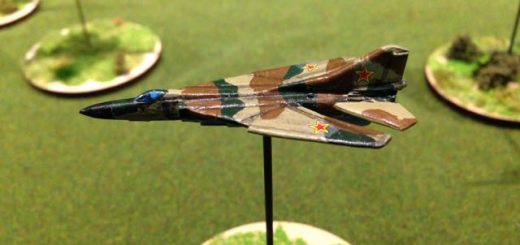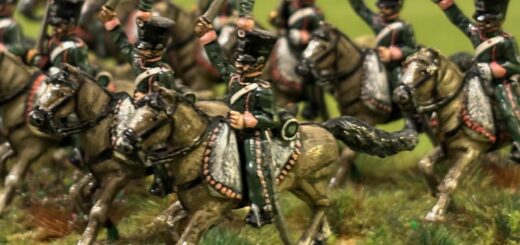Ironclads in Action
This ruleset has been written by Alan Goodearl (Central London wargamers)
Author notes on ship rosters building
If yours is the ironclad boardgame I am thinking of – it was called just
“Ironclads” and produced by a company called something like Yaquinto, but
there were later editions produced by other companies under different
names – it is fairly accurate in describing the ships.
Another good source is the Dictionary of American Naval Fighting Ships:
http://www.hazegray.org/danfs/
US ships are in the “Old Navy” section – the Confederates are at the bottom
of the page.
Though even this is not complete. Surprisingly, as the war was so recent,
there are many ships for which we do not have full details.
I have made cards like the ones we used last week for about half the ships
from the American Civil War. When your club has decided on the models you are getting I will send you what I have. For the rest, the cards are fairly
simple to make.
The maximum speed is drawn from what looks to be the best source. Which is a bit subjective but, unless there are strong reasons to believe they are
wrong, this is usually the speed given by the Dictionary of American Naval
Fighting Ships for the American Civil War or by a very handy reference
book – Conway’s All the World’s Fighting Ships 1860 – 1905 edited by Robert
Gardiner and published in London by Conway Maritime Press in 1979.
We then subtract 2 knots from this to find the maximum comfortable speed for the vessel. The reason for this is that most books give as a ship’s speed
almost the absolute maximum that it ever achieved. This was usually the
speed it made on trial. In this period builders were commonly fined if
their ship did not make its designed speed. Many were paid a bonus if the
ship exceeded its designed speed. So there was a big incentive to drive the
ship up to unrealistic speeds. For example, it might be carrying little
coal, stores or ammunition. Conditions would be perfect. The coal and
stokers would be of the best quality. Ships might have difficulty reaching
that speed again, especially if they had weed on their bottom or after their
engines had become worn. However there were times when a ship would be driven beyond its safe normal speed – to escape from pursuit, for example.
This is where the speed in brackets comes in – 2 knots higher than the safe
speed – and with it the slight risk that the engines will fail. This is a
crude way of representing how a ship’s engines might be handled, but it
seems to give a realistic effect. Most people will not take the risk of
forcing their engines at the start of a battle – even though the risk is
small. When damage accumulates and they become more desperate, though, they will force engines; and this tended to be when engines failed in reality.
Most of the other figures are even simpler. For example the damage capacity of a ship (described as “Hull Points” around page 4) is in most cases just one tenth of its length in feet plus one tenth of its width in feet. Which
is not a good representation of the volume of the ship. I did it this way
because it used to be hard to find the weight/ displacement of ships and
because there were so many differing ways in which this was measured in our time. Also, because a simple relationship between weight and damage-taking capacity did not represent what seemed to happen in reality. For example, on the whole, a 10,000 ton ship did not seem capable of taking as much punishment as ten 1,000 ton vessels. Still, this is something that I mean to refine when I revise the rules in a year or two’s time.
Work on the Duilio started in 1873, at Castellammare naval yard. She was
launched in 1876 and completed in 1880. Work on the Duilio also started in
1873, at La Spezia naval yard. She was launched in 1878 and completed in
1882. I would be particularly interested in hearing anything about the
smallest circle they could turn around in (their “turning circle”). I have
only found a single, English, source for this. This says that this circle
was just 220 yards in diameter. That is possibly correct, because they were
very well-designed ships. However, it is only about half what most ships of
their size would require. It would be good to find a Italian language
source to confirm this – as the English writer may have got muddled or have
translated a document badly.
Other very useful infornations from Alan
…
The USS Chippewa comes from a particularly large class. Officially this was called the Unadilla class – the name taken from the first to be launched. Normally, though, they are known as “90 Day Gunboats” – because they were built so quickly. There were 23 of them. Some carried slightly different armament, but the same model will do for all.
The CSS Hampton was the lead ship of what was intended to be a simularly large group of Confederate gunboats, though I think only 3 were built.
The USS Hartford doe not have exact sisters, but was very similar to the USS Brooklyn and Richmond. The Hartford herself, though, is a famous ship, as for much of the war she was the flagship of one of the best US Admirals – Farragut.
The Hartford and Chippewa are particularly useful as ships from these classes served in a variety of theatres – on the coast, but also far up the Mississippi. This is unusual for the American Civil War, as most ships served either on the coast or up-river, but not both.
…
All of your club member’s US armoured ships are from the Mississippi. Though they do not look powerful they were stronger than most of the Confederate river ships, as few of these had any armour at all.
The Cairo was the lead ship of a class, sometimes also called the “Pook’s Turtles” or the City class – USS Cairo, Carondelet, Cincinnati, Louisville, Mound City, Pittsburgh and St Louis (later renamed Baron De Kalb).
There is a good article on them here:
http://www.thoroughbredmodels.com/Articles_Cario.htmThe colours noted for other models are generally just those used by players to distinguish between similar-looking models eg one model might have a yellow funnel and another a black funnel. It is surprising how little we know about the actual colour Civil War ships were painted in; and what we do know is mostly general, for example that US ships tended to be painted black. Photos show a variety of colour schemes but as they are black and white, it is hard to guess what colours they were. For a few ships we have a written record or a colour painting done at the time.
The Cairo class is an exception, though. As there were seven identical ships the US Navy had the typical wargamer’s difficulty of telling them apart, so ordered that coloured bands be painted on their funnels. These bands were:
Cairo, light grey
Carondolet, red
Cincinnati, blue
Louisville, green
Mound City, orange bands or stars (of unknown colour), sometimes both, I think
Pittsburgh, light brown stripes (also her funnels were taller than those on the others)
St Louis, yellow
These ships carried guns of a range of types and sizes. On these cards I have simplified these by classing them as the predominant type – to avoid dealing with too many fractions of batteries. I have come to think that the guns may have varied more from one ship to the other, especially later in their careers, but this will be good to start with.
The Benton was similar in design, but converted from a civilian vessel. It was slower than the City class but stronger. It was usually the flagship of the US Mississippi fleet.
I am unsure about the Indianola’s armour scheme. Will send you a new card if I found anything more about this.
…



